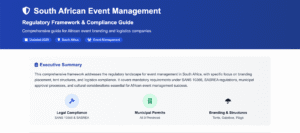Product launches play a crucial role in introducing new products to the market and ensuring their success. Whether it’s a groundbreaking innovation or an extension of an existing brand, a well-executed product launch can generate excitement, build momentum, and drive sales.
- There are four types of product launches: breaking in, breaking ground, brand extension and expansion, and conquering new territory. Each type requires a customized launch strategy based on its goals and objectives.
- Successful product launches require careful planning and coordination, including activities such as testing, creating sales and marketing collateral, training teams, and developing a communication plan.
- Building anticipation, gathering feedback, and creating momentum are essential for a successful product launch.
- Having a clear vision, a launch checklist, a system to measure success, and a well-developed communication plan are key components for a successful launch.
- There are three types of product launch events: minimal viable product (MVP), soft launch, and full-scale launch. Each event serves a specific purpose and should be chosen based on the product and target audience.
Types of Product Launches
Product launches can fall into one of four categories, each requiring a unique strategy to achieve its goals. Whether you’re introducing a new product to the market, announcing a breakthrough innovation, extending your brand, or expanding into new territories, understanding these types of launches is crucial for success.
1. Breaking In
The breaking in launch is all about entering a new market or industry. It involves introducing your product to customers who may not be familiar with your brand or the solutions you offer. This type of launch requires careful market research and a tailored marketing strategy to build awareness, credibility, and customer trust. It’s about establishing a strong presence and gaining a foothold in a competitive landscape.
2. Breaking Ground
A breaking ground launch is centered around groundbreaking innovations or technologies. It’s about introducing a product that disrupts the market and offers a unique value proposition. This type of launch requires focusing on the product’s differentiating features and benefits, showcasing how it solves a problem or satisfies an unmet need. It involves building excitement and anticipation for a game-changing product that will capture the attention of your target audience.
3. Brand Extension and Expansion
Brand extension and expansion launches entail leveraging the strength and reputation of an existing brand to introduce new products or services. This type of launch capitalizes on brand recognition, loyalty, and trust to penetrate new markets or expand into related product categories. It’s about leveraging the equity you’ve built in your brand to launch new offerings, catering to the evolving needs and preferences of your existing customer base.
4. Conquering New Territory
A conquering new territory launch involves expanding your operations into new geographical regions or untapped markets. It requires understanding local market dynamics, cultural nuances, and customer preferences. This type of launch may involve adapting your product, marketing strategy, and distribution channels to suit the specific needs of the target market. It’s about entering new territories with a tailored approach to maximize market penetration and capture new customers.

In summary, successful product launches require a well-defined strategy tailored to the specific type of launch you’re undertaking. Understanding these four categories of product launches will help you develop effective plans and achieve your goals, whether you’re entering new markets, introducing groundbreaking innovations, extending your brand, or conquering new territories. By identifying the right approach and executing a well-coordinated launch plan, you can maximize your chances of success and drive growth for your business.
Planning and Coordination for a Successful Launch
A successful product launch necessitates meticulous planning and coordination across various teams and departments. It involves strategic decision-making, careful testing and quality assurance (QA), the creation of effective sales and marketing collateral, and the development of a comprehensive communication plan. Each of these key elements plays a crucial role in ensuring a smooth and impactful launch.
Testing and QA are essential steps in the product launch process. Thoroughly assessing the product’s performance, functionality, and usability helps identify any issues or bugs that need to be addressed before the launch. This ensures that your customers have a positive experience from the start, helping to build trust and credibility.
The creation of well-designed sales and marketing collateral is another critical aspect of a successful launch. These materials serve as powerful tools to convey the value and benefits of your product to potential customers. From brochures to presentations and demos, every piece of collateral should be strategically crafted to engage your target audience and generate interest.
Furthermore, a robust communication plan is vital to disseminate information about the product to internal teams, stakeholders, and external audiences. This plan should outline key messages, target audiences, communication channels, and timelines. By ensuring consistent and effective communication, you can build anticipation and generate excitement around your product, maximizing its impact in the market.
| Key Components for a Successful Launch | Key Activities |
|---|---|
| Strategic product launch | Developing a launch strategy tailored to your goals and objectives |
| Testing and QA | Thoroughly assessing the product’s performance and functionality to identify and fix any issues |
| Sales and marketing collateral | Creating compelling materials that effectively communicate the value and benefits of your product |
| Communication plan | Developing a comprehensive plan to ensure consistent and impactful messaging |

By investing time and effort into planning and coordination, you can significantly increase the chances of a successful product launch. Whether it’s aligning teams, coordinating activities, or developing effective collateral and communication strategies, every aspect plays a vital role in delivering a compelling and impactful launch.
Building Anticipation and Creating Momentum
Building anticipation and creating momentum are essential elements of a successful product launch. When introducing a new product to the market, it’s important to generate excitement and interest among potential customers. By strategically planning and executing a launch that captures attention and builds anticipation, you set the stage for a successful product release.
To create momentum, it’s crucial to gather feedback from your target audience. This allows you to refine your product and marketing strategies based on real-world insights. By listening to your customers and addressing their needs and preferences, you can build a product that truly resonates with your target market.
Gathering Feedback
Gathering feedback can be done through various channels, such as surveys, focus groups, and social media engagement. The feedback you receive is invaluable in shaping your product and marketing efforts. It helps you identify any areas for improvement and make necessary adjustments before the official launch. Additionally, involving your customers in the development process creates a sense of ownership and loyalty, fostering a strong connection between your brand and its audience.
By creating a buzz and generating anticipation, you can create a sense of urgency and desire for your product. Offering sneak peeks, teaser campaigns, and exclusive pre-launch events can all work together to build excitement and anticipation. Utilizing strategic communication channels, such as email marketing, social media, and influencer partnerships, allows you to reach a wide audience and generate momentum leading up to the launch.

Remember, building anticipation and creating momentum require a well-executed product launch strategy. You need to have a clear vision, a comprehensive launch checklist, and a system in place to measure success. By carefully planning and coordinating your launch activities, ensuring alignment across teams, and effectively communicating with your audience, you can maximize the impact of your product launch and set the stage for long-term success.
| Key Points | Actions |
|---|---|
| Build anticipation | Create teaser campaigns, offer sneak peeks, and host exclusive pre-launch events |
| Gather feedback | Utilize surveys, focus groups, and social media engagement to gather insights from your target audience |
| Create momentum | Utilize strategic communication channels, such as email marketing and social media, to generate excitement and engagement |
| Ensure a well-executed launch | Have a clear vision, a comprehensive launch checklist, and a system in place to measure success |
Essential Components for a Successful Launch
To ensure a successful product launch, it is important to have key components in place, including a clear vision and a launch checklist. A clear vision sets the direction and purpose for the launch, guiding all activities and decisions. It helps define the target audience, positioning, and messaging, ensuring that the product is launched with a focused strategy.
A launch checklist is also essential to keep track of all the tasks and activities involved in the launch process. It helps ensure that nothing is overlooked and provides a structured approach to executing the launch plan. The checklist should outline important milestones, deadlines, and responsibilities, keeping everyone accountable and on track.
In addition to a clear vision and launch checklist, measuring success is crucial. By establishing measurable goals and key performance indicators (KPIs) upfront, you can track the progress and effectiveness of the launch. This allows you to make data-driven decisions and iterate on your strategies to improve results.
Lastly, a well-developed communication plan is essential for a successful launch. It outlines the messaging, channels, and timing for reaching your target audience. A communication plan ensures consistent and effective messaging across all touchpoints, maximizing the impact of your product launch.
| Key Components | Description |
|---|---|
| Clear Vision | A well-defined direction and purpose for the launch, guiding all activities and decisions. |
| Launch Checklist | A structured approach to executing the launch plan, outlining milestones, deadlines, and responsibilities. |
| Measuring Success | Establishing measurable goals and KPIs to track the progress and effectiveness of the launch. |
| Communication Plan | An outline of messaging, channels, and timing for reaching the target audience, ensuring consistent and effective communication. |

“A well-developed communication plan ensures consistent and effective messaging across all touchpoints, maximizing the impact of your product launch.”
Conclusion:
To ensure a successful product launch, having a clear vision, launch checklist, system for measuring success, and a well-developed communication plan are essential. These key components provide guidance and structure throughout the launch process, ensuring that all activities are aligned and focused. By incorporating these components into your product launch strategy, you can increase the chances of a successful and impactful launch.
Types of Product Launch Events
Product launches can take different forms, ranging from a minimal viable product (MVP) release to full-scale launches. Each type of event serves a specific purpose in introducing a new product to the market and targeting different segments of the audience.
1. Minimal Viable Product (MVP) Launch: This type of launch is focused on releasing a basic version of the product with essential features to gather feedback and gauge market interest. It allows companies to test the product’s viability and make necessary improvements before a full-scale launch. An MVP launch is ideal for startups and companies looking to minimize risks and gain valuable insights from early adopters.
2. Soft Launch: A soft launch involves introducing the product to a limited audience or specific geographical area. It allows companies to test the product in a controlled environment, gather feedback, and make necessary adjustments before a wider release. A soft launch is beneficial for companies aiming to fine-tune their marketing strategies, identify potential issues, and build anticipation among consumers.
3. Full-Scale Launch: A full-scale launch is the most comprehensive and impactful type of product launch event. It involves unveiling the product to a wider audience and generating maximum awareness and excitement. A full-scale launch often includes extensive marketing campaigns, press releases, media events, and promotional activities. This type of launch is suitable for established brands or companies launching groundbreaking products that require significant market penetration and customer adoption.
Regardless of the type of product launch event, careful planning, coordination, and a well-defined launch strategy are crucial for success. Companies should align their teams, develop a communication plan, create sales and marketing collateral, and measure the success of the launch. By selecting the appropriate launch event and executing it effectively, companies can maximize their chances of capturing the market’s attention and achieving their desired goals.

| Launch Event | Purpose | Target Audience | Risks |
|---|---|---|---|
| Minimal Viable Product (MVP) Launch | Gather feedback, test viability, make improvements | Early adopters, target market segment | Potential limited functionality or features |
| Soft Launch | Test product, gather feedback, build anticipation | Limited audience, specific geographical area | Potential issues or challenges |
| Full-Scale Launch | Create maximum awareness, generate excitement | Wider audience, target market | High competition, scalability challenges |
Importance of Documentation and Alignment
Documenting the product launch strategy and ensuring alignment among all teams is crucial for a successful launch. When launching a new product, it’s essential to have a well-defined strategy that outlines the goals, target audience, messaging, and key deliverables. By documenting this strategy, you provide a clear roadmap for everyone involved in the launch, ensuring that everyone understands their roles and responsibilities.
Aligning teams is equally important. It ensures that all departments, from product development to marketing and sales, are working towards a common goal. When teams are aligned, they can collaborate more effectively, share insights, and make informed decisions that contribute to the success of the launch.
Importance of a Launch Plan Execution
An effective launch plan execution is essential for achieving desired results. It involves coordinating various activities, timelines, and resources to ensure a smooth and impactful launch. A well-executed launch plan minimizes risks, identifies potential challenges, and maximizes opportunities.
| Key Elements of a Launch Plan Execution | Description |
|---|---|
| Timelines | Defining specific deadlines for each task and milestone ensures that the launch stays on schedule. |
| Responsibilities | Assigning clear roles and responsibilities to team members ensures accountability and streamlines the execution process. |
| Communication | Establishing regular communication channels and providing updates to all stakeholders keeps everyone informed and ensures a coordinated effort. |
| Monitoring and Adjustments | Regularly monitoring the launch progress and making necessary adjustments based on feedback and market conditions helps optimize results. |
By executing the launch plan effectively, you increase the chances of achieving your desired outcomes, such as generating buzz, driving sales, and building brand awareness. It allows you to create a memorable launch experience for your target audience and set a strong foundation for the success of your product in the market.

Strategic communication and feedback gathering are key elements of a successful product launch strategy. Effective communication plays a vital role in engaging customers and creating excitement around a new product. By utilizing various communication channels such as social media, email marketing, and press releases, you can effectively convey the value and benefits of your product to potential customers.
Gathering feedback is equally important as it provides valuable insights into customer preferences, needs, and expectations. By actively seeking feedback through surveys, focus groups, and customer interviews, you can identify any potential issues or areas for improvement before and after the product launch. This allows you to make necessary adjustments and enhancements to ensure a better product-market fit.
In order to facilitate strategic communication and feedback gathering, it is essential to have a well-defined communication plan. This plan should outline the target audience, key messaging, communication channels, and the timeline for different communication activities. By carefully planning and executing your communication strategy, you can effectively reach your target audience and generate buzz around your product.

- Builds anticipation: By strategically communicating information about your product launch, you can generate excitement and anticipation among your target audience.
- Engages customers: Effective communication helps to engage customers and build a relationship with them. This encourages customer loyalty and increases the likelihood of repeat purchases.
- Drives innovation: Gathering feedback allows you to gain valuable insights that can drive innovation and help you meet customer needs more effectively. By listening to your customers, you can identify new product features or improvements that can set your product apart from competitors.
Remember, strategic communication and feedback gathering are ongoing processes. It is important to consistently monitor and analyze the effectiveness of your communication efforts and make necessary adjustments to ensure the success of your product launch.
| Key Takeaways: |
|---|
| Strategic communication and feedback gathering are key elements of a successful product launch strategy. |
| Effective communication helps engage customers and build excitement around the product. |
| Gathering feedback provides valuable insights for product improvement and innovation. |
| A well-defined communication plan is essential for strategic communication and successful product launches. |
Measuring Success and Iterating
Measuring success and iterating based on data and feedback are essential for continuous improvement in product launches. In order to gauge the success of a product launch, it’s important to define clear metrics and key performance indicators (KPIs). These metrics can include sales numbers, customer acquisition rates, market share, customer satisfaction, and brand awareness. By analyzing these metrics, you can evaluate the effectiveness of your launch strategy and make data-driven decisions to drive further success.
Feedback from customers, stakeholders, and internal teams is also crucial in the iterative process. By actively seeking feedback through surveys, interviews, and user testing, you can gain valuable insights into the strengths and weaknesses of your product launch. This feedback can help you identify areas for improvement and guide your iterative efforts. It’s important to listen to both positive and negative feedback, as both can provide valuable insights for refining your product offering and launch strategy.
One effective way to track and measure success is by using a product launch scorecard or dashboard. This allows you to monitor key metrics in real-time and visualize the progress of your launch. By regularly reviewing and analyzing this data, you can identify trends, patterns, and areas that require attention. This iterative approach allows you to make adjustments and improvements throughout the launch process, ensuring that you stay aligned with your objectives and continuously enhance your product offering.

The Role of Sales and Marketing Collateral
Effective sales and marketing collateral plays a crucial role in supporting a successful product launch. These materials serve as valuable tools to convey the value and benefits of the new product to potential customers, creating interest and ultimately driving sales. From brochures and sales presentations to product videos and social media content, well-designed collateral enhances the overall launch strategy and helps achieve the desired outcomes.
One of the key advantages of using sales and marketing collateral is the ability to provide detailed information about the product in a visually appealing and easily understandable format. These materials can effectively showcase the features, specifications, and unique selling points of the new product, helping customers make informed purchase decisions. By presenting this information in a compelling way, collateral materials can generate excitement, increase awareness, and build trust in the brand.
In addition, sales and marketing collateral enables consistent messaging across different channels and touchpoints. By aligning the content and design with the overall launch strategy, companies can reinforce their brand identity and create a cohesive customer experience. Whether it’s a digital advertisement, a product catalog, or a trade show booth display, the collateral should reflect the brand’s values, positioning, and target audience.
To optimize the impact of sales and marketing collateral, it’s essential to tailor the materials to the needs and preferences of the South African market. Localizing the content, considering cultural nuances, and using relevant examples and testimonials can make the collateral more relatable and persuasive. By understanding the target audience and their specific requirements, companies can create collateral that truly resonates with potential customers and drives engagement.
Sample Sales and Marketing Collateral
Here is an example of the types of sales and marketing collateral that can support a successful product launch:
| Collateral | Description |
|---|---|
| Product Brochure | A visually appealing and informative brochure that highlights the key features, benefits, and specifications of the product. It can be printed or digital. |
| Product Presentation | A slide deck or multimedia presentation that provides a comprehensive overview of the product, including its unique selling points and competitive advantages. |
| Product Video | A captivating video that showcases the product in action, demonstrating its functionalities and illustrating real-life use cases. |
| Social Media Content | Engaging and shareable content designed for various social media platforms, such as teaser videos, product images, and customer testimonials. |
| Case Studies | Success stories and testimonials from satisfied customers, highlighting the positive impact of the product and its benefits in real-world situations. |
| FAQs and Q&A Guides | Comprehensive and well-structured documents that address common customer questions and provide accurate and helpful answers. |
By leveraging these and other types of sales and marketing collateral, companies can effectively communicate the value of their new product, engage their target audience, and drive successful product launches in the South African market.

Proper training and equipping of sales and support teams are vital for a successful product launch. These teams play a crucial role in promoting and selling the new product to customers. By providing them with the necessary knowledge and skills, you can ensure that they are well-prepared to address customer queries and effectively communicate the value and benefits of the product.
Training sessions should focus on product knowledge, highlighting the unique features and advantages of the new product. This includes understanding the target market, competitors, and key selling points. Providing sales teams with comprehensive training materials, such as sales guides and product brochures, can help them familiarize themselves with the product and its positioning in the market.
Equipping support teams with the right tools and resources is equally important. This includes providing them with access to product documentation, customer support scripts, and training on how to handle different customer scenarios. By ensuring that support teams are well-equipped, they can provide timely and accurate assistance to customers, enhancing their overall experience with the product.
Key Training and Equipping Strategies:
- Conduct interactive training sessions with real-life scenarios to enhance problem-solving skills and build confidence among sales and support teams.
- Create a knowledge-sharing platform where team members can collaborate and exchange best practices.
- Implement regular training updates and refresher courses to keep teams updated with any product or market changes.
- Establish a feedback mechanism to gather insights from the sales and support teams on customer responses, challenges, and training needs.
Remember, your sales and support teams are the frontline representatives of your product. By investing in their training and equipping them with the necessary resources, you can increase their effectiveness in promoting and selling the new product, ultimately leading to a successful product launch.

| Strategy | Description |
|---|---|
| Interactive Training Sessions | Conduct interactive training sessions with real-life scenarios to enhance problem-solving skills and build confidence among sales and support teams. |
| Knowledge-Sharing Platform | Create a platform for team members to collaborate and exchange best practices, facilitating continuous learning and improvement. |
| Regular Training Updates | Implement regular training updates and refresher courses to keep teams updated on product and market changes. |
| Feedback Mechanism | Establish a feedback mechanism to gather insights from the sales and support teams on customer responses, challenges, and training needs. |
Conclusion
In conclusion, product launches are crucial for introducing new products to the South African market and ensuring their success. They play a vital role in capturing the attention of consumers and creating a buzz around the product. By following a well-structured launch strategy, companies can effectively communicate the value and benefits of their offerings.
A successful product launch requires careful planning and coordination, with teams working together to test and fine-tune the product, create compelling sales and marketing collateral, and train the sales and support teams. It also involves developing a comprehensive communication plan to engage with customers and gather valuable feedback.
During a product launch, it is essential to build anticipation and create momentum by actively engaging with customers, generating excitement, and soliciting feedback. By measuring the success of the launch and iterating based on data and insights, companies can continuously improve their strategies and achieve better results.
Having a clear vision, strategy, launch checklist, and a system to measure success are essential components of a successful product launch. It is also crucial to document the launch strategy and ensure alignment across all teams to execute the plan effectively. By doing so, companies can maximize the impact of their product launch and set themselves up for long-term success in the South African market.
FAQ
What are the different types of product launches?
The different types of product launches include breaking in, breaking ground, brand extension and expansion, and conquering new territory.
What does a successful product launch require?
A successful product launch requires careful planning and coordination across various teams and departments within the organization. It involves activities such as testing and QA, creating sales and marketing collateral, training the sales and support teams, and developing a communication plan.
What should a product launch strategy include?
A product launch strategy should include a clear vision, a strategic communication plan, a launch checklist, and a system to measure success.
What are the types of product launch events?
The types of product launch events include minimal viable product (MVP), soft launch, and full-scale launch.
Why is it important to document a product launch strategy?
Documenting a product launch strategy ensures that all teams are aligned and ready to execute the launch plan effectively.
How can you build anticipation and create momentum during a product launch?
To build anticipation and create momentum during a product launch, it is important to gather feedback, create excitement, and generate interest in the product.
What are the essential components for a successful product launch?
The essential components for a successful product launch include having a clear vision, a launch checklist, a system to measure success, and a well-developed communication plan.
When should minimal viable product (MVP), soft launch, and full-scale launch events be used?
Minimal viable product (MVP) events are used to test the product with a small group of users, soft launches are used to introduce the product to a limited audience, and full-scale launches are used to release the product to the wider market.
Why is it important to align teams and document the product launch strategy?
Aligning teams and documenting the product launch strategy ensures that everyone is on the same page and ready to execute the launch plan effectively.
What is the role of strategic communication during a product launch?
Strategic communication plays a crucial role in engaging customers, conveying the value of the product, and gathering valuable feedback.
Why is measuring success and iterating important during a product launch?
Measuring success and iterating allows for the analysis of data, gathering feedback, and making necessary adjustments to achieve better results during a product launch.
What is the role of sales and marketing collateral during a product launch?
Sales and marketing collateral plays a crucial role in conveying the value and benefits of the product to potential customers.
Why is training and equipping sales and support teams important during a product launch?
Training and equipping sales and support teams ensure that they have the necessary product knowledge, communication skills, and ability to address customer queries during a product launch.
What Are the Essential Steps to Successfully Plan a Product Launch Event?
Planning a product launch event involves careful consideration and attention to detail. Here are 10 steps for successful event planning: defining your objectives, identifying your target audience, selecting a suitable venue, creating a budget, developing a promotional strategy, designing an engaging program, securing necessary permits, coordinating logistics, preparing for potential setbacks, and evaluating the event’s success afterwards. Each step is crucial to ensure a seamless and memorable product launch event.




